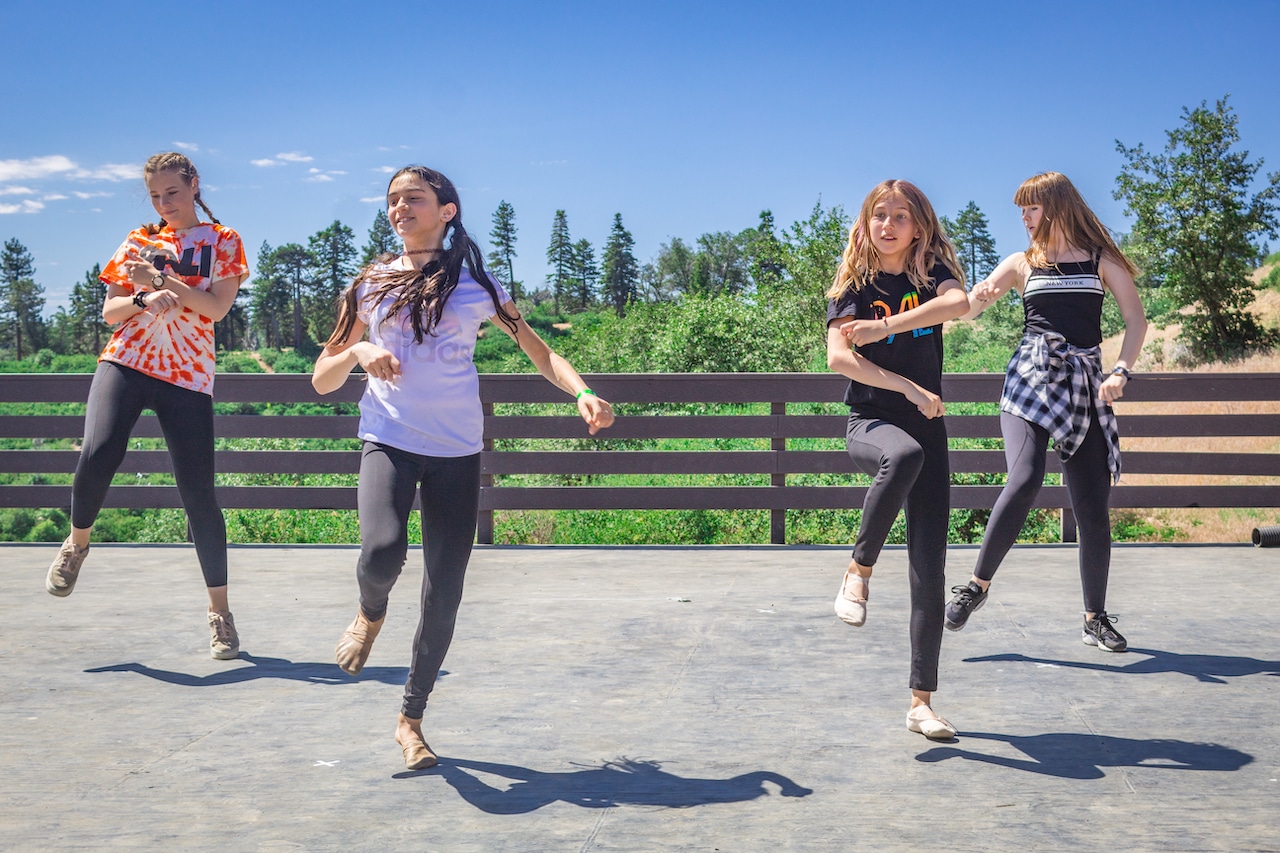4 Ways Dancing Can Help Your Child Cope with Anxiety

Your child is creative, brimming with ideas they want to share with the world. But they’re also deeply shy. So they stick to what’s comfortable and keep to themselves, especially in unfamiliar situations that provoke anxiety.
Turning on music and dancing might seem like the least plausible response to anxiety, but it’s surprisingly effective and exhilarating. Seeing someone dance with full abandon is witnessing pure self-expression, without the boundaries of the mind getting in the way.
Dance summer camp can be the perfect solution for anxious children to have fun and express themselves. Here are four ways that dancing can help your child cope with anxiety, whether they’re an anxious child or they’re just nervous about leaving for camp for the first time.
1. Connecting Mind and Body
Worry and anxiety are part of our built-in alert system to protect ourselves from danger, which is why anxiety is hyper-focused on planning for potential future events. The problem is that anxious people over-plan to accommodate future scenarios, blinding themselves to presently available safety options.
The same thought maze applies to catastrophizing, a common anxiety thought process in which we irrationally believe that something is far worse than it actually is. The progression from A to B seems logical in principle, but the progression from A to M is wildly disproportionate.
Anxious thought mazes all translate to the same thing: your child spends so much time worrying about what might go wrong that they disconnect from the present moment, mentally and physically.
Dance counteracts this process because it forces the dancer to focus on controlling their muscles, rather than abstract planning. This helps bring the mind back to the present moment, rather like meditation. When done right, dance itself is a form of meditation, one that’s often more effective for children who lack the patience and focus required for straight meditation.
2. Connecting with Yourself and Others
When children–especially anxious children–are given the tools to engage their focus in the present moment, something critical happens.
They’re given the tools to reconnect with themselves.
It’s often said that human communication is 55% body language, 38% tone of voice, and 7% spoken words. The ability to read someone’s thoughts and attitude through their body language is the original human communication system, predating spoken language and written words.
And if your child is anxious, they’re more aware of their own body language than the average person–and they’re more inclined to use their body language in specific ways to influence how others perceive them.
In this way, anxious children are better equipped to be dancers than other people. However, since anxious people are more sensitive to negative outcomes, they’re also more prone to overthinking their own expression. Learning to dance (and the concentration required for dance) can help children recalibrate their own body language and reaffirm the link between what they want to express and how they physically express it, rooted firmly in the present moment.
3. Self-Expression
Dancing is a visceral experience, and it’s all about how you use your body. You can fake vocal inflections to hide emotion, but you can’t fake expression through dance.
This is also why dance can be so liberating for anxious children, who often worry about expressing themselves in the right way.
Dance doesn’t require words, just movement. This frees children from the need to find the right words. It brings us back to a more primitive state of mind that doesn’t require the higher thinking-obsessiveness anxiety thrives on.
However, dance lessons are also helpful because they require practice. Beginners can’t master famous dance moves in a day–they have to keep trying. And trying. And trying.
The beauty of dance camp? Every camper is trying. Every camper is learning. And as they keep trying, campers learn how to they can express certain emotions through dance, providing them a new avenue of expression while still demanding deep focus to perform the moves, thus blocking out-of-control spirals of anxious thoughts.
4. Improving Concentration
The best dancers aren’t those with crazy flexibility. In truth, the best dancers are the ones who are the most focused, as it requires extreme focus to perform the most difficult dance moves.
Imagine trying to plie while thinking about your cable bill. Hint: it’s not possible.
This also gives your child an opportunity to let go of worry, as they have to focus on doing the move rather than worrying about how it looks. They have to learn how to use their muscles with incredible precision, an acquired skill that relies primarily on focus.
This does two things for anxious children:
- Brings them into the present moment
- Trains their minds to control the direction of their thoughts
This is a skill that they can carry with them even outside the dance studio, as they can learn to hone their thoughts to let go of anxiety even when they aren’t dancing.
Looking for the Best Dance Summer Camp?
While your camper may be wary of dance at first, the truth is that dance summer camp could actually be the best thing they do all summer. It gives them the tools to connect with themselves, come back to the present moment, and provides them the tools they need to conquer their anxiety outside of dance class.
In short, dance provides your child with life skills that will serve them for years to come.
It’s all part of our Pali philosophy of helping children achieve their personal best while giving them the summer experience of a lifetime. If it sounds like the right fit for your child, we would love to see your camper this summer. Click here to check out our 2020 dates, rates, and enrollment deadlines.